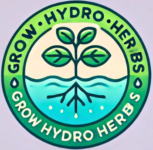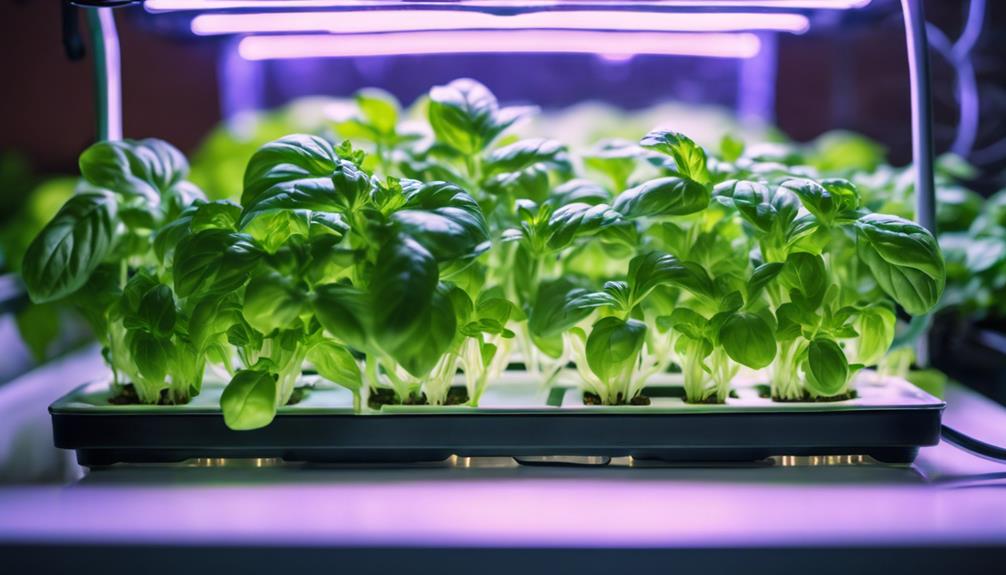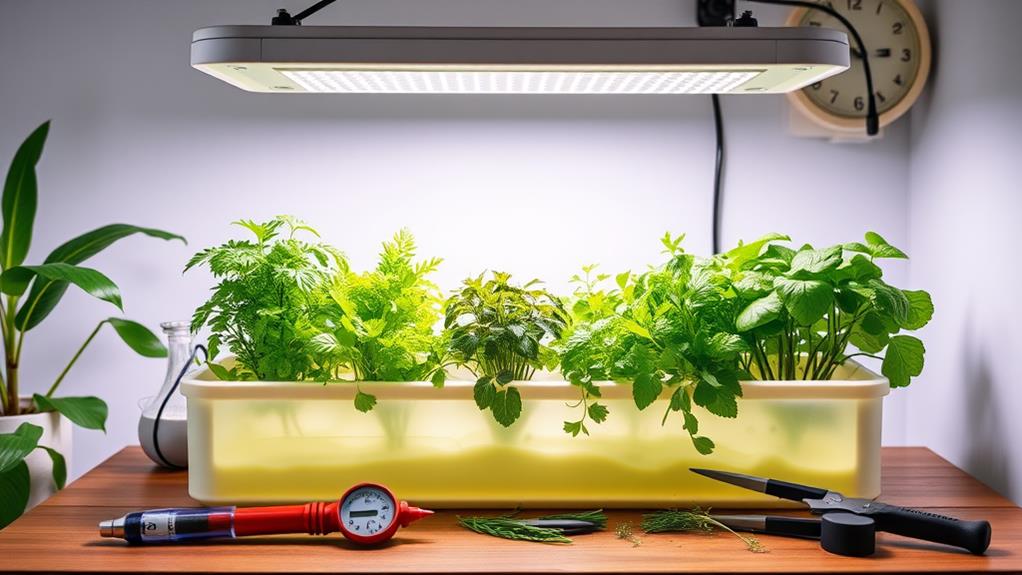What are pH and EC in Hydroponics?
Getting the hang of pH and electrical conductivity (EC) is really important for running a successful hydroponic system. Ignoring these are common mistakes when setting up and maintaining a hydroponic garden. Let’s explore how pH and EC for hydroponics can influence your plant growth and how to improve it!
To help your plants absorb nutrients at their best, aim for a pH level between 5.5 and 6.5.
Checking and adjusting these levels regularly can stop nutrient shortages and keep your plants healthy.
On the other hand, keeping an eye on EC ensures that your plants are getting the right strength of nutrient solution.
Remember, things like temperature and humidity can affect both pH and EC, so be ready to make changes when needed.
Using good practices for measuring and keeping track of these levels can make your growing experience even better.
When you understand pH and EC, you’re not just helping your plants thrive; you’re also becoming part of a gardening community that shares knowledge and tips.
This collaboration can lead to even more successful growing methods and insights.
Importance of Ph in Hydroponics
Understanding pH in hydroponics is super important because it directly affects how well plants can absorb nutrients.
To keep plants healthy and growing strong, it’s crucial to maintain the right pH level, which usually falls between 5.5 and 6.5. When the pH strays from this sweet spot, plants can end up missing out on essential nutrients or, worse, taking in too much of something harmful.
That’s why checking the pH regularly is key—ideally, at least once a week. This simple step helps ensure that your plants get everything they need to thrive.
By grasping the basics of pH management, hydroponic gardeners can come together to share tips and experiences.
This kind of community support can really boost everyone’s success in growing lush, healthy crops.
Key Nutrients Affected by Ph

Nutrient availability in hydroponics is heavily influenced by pH levels. This means that certain essential nutrients become more or less available to plants depending on the pH of the solution. For example, key nutrients like nitrogen, phosphorus, potassium, calcium, and magnesium have different solubility rates based on pH, which can really affect how healthy and productive the plants are.
When the pH is on the acidic side (below 6), it actually helps micronutrients like iron and manganese become more accessible. These micronutrients are vital for plant growth.
However, if the pH gets too high, it can create problems. High pH levels can block the uptake of important nutrients like phosphorus and iron, which can lead to deficiencies. This can slow down growth and overall plant health.
To keep everything running smoothly, it’s important to maintain the pH within the sweet spot of 5.5 to 6.5. By doing this, you ensure that your plants can absorb the nutrients they need to thrive.
This creates a healthy hydroponic environment where you, as a grower, can feel confident in your ability to cultivate healthy plants.
Techniques for Ph Management

Keeping the right pH levels in hydroponic systems is crucial for ensuring that plants get the nutrients they need to thrive.
It’s not just important for plant health; it also brings together a community of people who love hydroponics.
Here are four key ways to manage pH effectively:
- Test Regularly: Make it a habit to check your pH levels at least once a week. You can use simple pH meters or color-changing test kits to get accurate results.
- Adjust Slowly: If you need to change the pH, do it gradually. Whether you’re using something alkaline, like lime, or something acidic, like phosphoric acid, taking your time helps prevent shocking the plants.
- Use Buffer Solutions: Adding pH buffers to your nutrient solutions can help keep the pH stable. This means fewer wild swings in your pH levels, which is good for your plants.
- Watch for Influences: Pay attention to how different nutrients and the quality of your water affect pH levels. Being aware of these factors allows you to adjust your methods when needed.
Understanding Electrical Conductivity

Understanding electrical conductivity, or EC, is really important for anyone working with hydroponic systems. Why? Because EC shows us how many dissolved ions are in the nutrient solution that plants rely on.
When we measure EC, we get a clear idea of how available nutrients are. This has a direct impact on how healthy and strong our plants can grow. Keeping the EC levels balanced is key. It ensures that plants get just the right amount of nutrients, avoiding any risks of having too much or too little.
By regularly checking the EC, growers can make smart changes to their nutrient solutions. This helps create the best possible environment for the plants to flourish.
Understanding the connection between EC and what plants need can also bring people together in the gardening community. It helps everyone share tips and celebrate successes in hydroponic gardening.
When we embrace these practices, we not only improve our own gardening skills, but we also foster a deeper appreciation for the art of hydroponic cultivation.
Managing EC for Optimal Growth

To achieve the best growth in hydroponic systems, it’s crucial to keep a close eye on electrical conductivity, or EC for short.
Why is this important? Because maintaining the right EC helps ensure that your plants have access to the nutrients they need, while also preventing stress that can hinder their growth.
Here are four straightforward strategies to manage EC effectively:
- Keep an Eye on Levels: Regularly check your EC levels with an EC meter. This handy tool will help you ensure that the levels match what your specific crops need.
- Adjust Your Nutrient Solution: As your plants grow, their nutrient needs change. Be prepared to tweak the strength of your nutrient solution to keep the EC at ideal levels for each growth stage.
- Know Your Environment: Remember that temperature and humidity can influence EC. If the weather changes, be ready to adjust your nutrient solution accordingly to maintain balance.
- Act Quickly: If you notice any imbalances in EC, don’t wait! Address these issues right away. This will help you avoid nutrient deficiencies or toxicities, creating a healthy environment for your plants to thrive.
Best Practices for Monitoring pH and EC for Hydroponics

Taking care of the electrical conductivity (EC) levels in your hydroponic garden is important, but it’s not the only thing you need to focus on. Monitoring both pH and EC levels is crucial for the health of your plants.
To keep everything in check, make sure to test the nutrient solution regularly. It’s a good idea to take readings from different spots to ensure you’re getting an accurate picture of the conditions. Use trustworthy pH and EC meters for reliable results.
Don’t forget to keep a record of your measurements! Documenting these readings helps you notice patterns and catch any potential problems early on. If something seems off, addressing those imbalances quickly can help you avoid stressing your plants and encourage them to grow strong and healthy.
Always follow the specific guidelines for the crops you’re growing to ensure they get the nutrients they need. And if you find that the pH needs adjusting, there are products available to help with that.
By making regular monitoring a priority and adjusting things gradually, you can create a thriving hydroponic environment. This not only benefits your plants but also fosters a sense of community and shared success among fellow gardening enthusiasts.
How do we Learn This for a Successful Hydroponics Experience?

To grow successful hydroponic plants, it’s important to understand the basics of hydroponics. Education is key in building a community of knowledgeable growers. When people learn together, they can share tips, solve problems, and celebrate each other’s successes.
Getting a good grasp on things like pH levels and electrical conductivity (EC) is vital. These factors help you manage nutrient solutions effectively, which leads to healthier plants.
There are many ways to learn about hydroponics. You can attend workshops, take online courses, or join forums where gardeners connect. These resources offer great insights and help create a friendly network for both beginners and experienced gardeners.
By focusing on education, not only do you improve your own gardening skills, but you also help build a shared pool of knowledge. This, in turn, nurtures a lively community that cares about sustainable and fruitful hydroponic farming.
What did we Learn About pH and EC for Hydroponics?
Key Takeaways
- Optimal pH Levels: Maintain a pH between 5.5 and 6.5 to ensure plants absorb nutrients effectively.
- Monitor EC Levels: Regularly check electrical conductivity (EC) to provide the right nutrient concentration for your plants.
- Regular Testing: Frequent monitoring of pH and EC prevents nutrient deficiencies or toxicities.
- Environmental Factors: Be aware that temperature and humidity can affect pH and EC, requiring timely adjustments.
- Community and Education: Engaging with the hydroponic community enhances knowledge sharing and growing success.
In the fascinating world of hydroponics, two key players—pH and electrical conductivity—work together to help plants grow strong and healthy.
Understanding these two factors is essential. They determine how well plants can absorb important nutrients from their environment. When pH levels are just right, and electrical conductivity is on point, plants thrive. This leads to lush growth and impressive harvests.
To achieve this, hydroponic growers need to be proactive. Regularly checking pH and EC levels is crucial. By keeping an eye on these parameters and making adjustments as needed, they can create a thriving ecosystem for their plants.
In the end, grasping the importance of pH and electrical conductivity can truly transform a hydroponic setup. It turns the growing space into a vibrant tapestry of life, ensuring that every harvest is a successful one.
Frequently Asked Questions
What is the ideal pH range for hydroponic systems?
The ideal pH range for hydroponics is between 5.5 and 6.5, which optimizes nutrient absorption for most plants.
How does electrical conductivity (EC) affect plant growth in hydroponics?
EC measures the nutrient concentration in your solution; proper EC levels ensure plants receive the right amount of nutrients for healthy growth.
Why is regular monitoring of pH and EC important in hydroponics?
Regular monitoring helps prevent nutrient imbalances, ensuring plants are neither deficient nor overloaded with nutrients.
How can I adjust the pH levels in my hydroponic nutrient solution?
Adjust pH slowly using pH up or pH down solutions, and consider using buffer solutions to maintain stability.
What factors can influence EC levels in hydroponic systems?
Factors like temperature, humidity, and plant growth stages can affect EC levels, necessitating regular adjustments.
How can I manage EC for optimal plant growth in hydroponics?
Use an EC meter to monitor levels, adjust nutrient solutions as plants grow, and respond quickly to any imbalances for optimal results.


